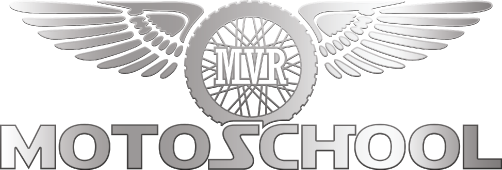Content
Great way explain different types of CRM software’s benefits and features, thank you for sharing such informative information with us. In reality, many CRM systems, especially the big names like Salesforce or SugarCRM, cover all those bases . CRMs are robust platforms, often with a https://xcritical.com/ handful or even dozens of individual modules that cover a huge range of features. The major difference is that some specialize more heavily in one area — analytical CRM, for example. This CRM type is all about making communication and collaboration more efficient across your teams.
For instance, an early stage inside sales software company should be using a different CRM than an enterprise outside sales team. For example, a field sales CRM should look, feel and act a lot different than an inside sales CRM. In fact, over collaborative crm 90% of companies have a CRM adoption rate less than 40%. CRMs make up the largest software category – estimated to reach $35B by 2023 – with thousands of vendors catering to different industries, company sizes and sales team structures.
B2C CRM
It is employed in B2B scenario, where multiple businesses can conduct product development, market research, and marketing jointly. Conversational CRM is an approach to managing customer relationships that treats each interaction as part of a larger, ongoing conversation. Customers do not want to repeat themselves and start from scratch every time they interact with a brand. Marketing automation, sales automation, and service automation offload some of the work that your employees would otherwise have to handle. That opens up their schedule for the more creative and personal aspects of their jobs—the stuff that needs a human touch.
Ideally, a CRM for your business must be easy to use, user-friendly, and offer a free trial option so that you could try its functionality first. Besides, as a small business owner, you probably have your company vision that’s not yet based on the market laws big sharks are abiding by. In this case, it all depends on your budget and business ambitions. If you can afford to invest money into solutions with versatile tools, features, and integrations, that’s a wow.
Some would even require you to hire someone to manage them on an ongoing basis. For a small business, investing in something your team never has the time to learn won’t be worth the cost. But even large companies will be better served finding something they can get up and running fast—and that employees can start using on day one without special training. Some collaborative CRMs also help companies consolidate where they store important customer documents.
Campaign Management CRM Software
So I spent dozens of hours researching and testing every one I could get my hands on. Manage multiple complex sales processes with ease while optimizing them through powerful automation as well as AI predictions and recommendations. When every team is an island of their own, it becomes a massive bottleneck for any organization to grow. Real-time customer information cannot be shared across teams which in turn affects the way you serve your customer needs.

CRM systems manage all elements of the interaction between a brand and its would-be or current customers. Marketing automation involves market segmentation, campaigns management, event-based marketing, and promotions. The campaign modules of Marketing Automation enable the marketing force to access customer-related data for designing, executing and evaluating targeted offers, and communications. Operational CRMs usually include the features common in collaborative CRMs but add features that are more about tracking, managing, and improving the full customer lifecycle. In comparison to the other types of CRMs, collaborative CRMs tend to be geared more toward customer retention and satisfaction than making sales.
The Flow Builder lets you create custom process management automations. Click Flows in Settings, and select the type of flow you want to create. For example, a record-triggered flow lets you design what happens after a particular record is created. Using the visual builder, you can then add conditions—for example, contacts created only during a certain date range will be sent a follow-up email.
Marketing teams can use a CRM to target their ideal customer profiles (demographics, location, etc.) when planning campaigns. The CRM also measures the ROI on their marketing activities and campaigns so they can adjust accordingly in the future. Still, if you dig deeper into our list, you can find that HubSpot CRM is the best software of its kind. It’s free, lightweight, and can integrate with its other sister products to expand your reach. Don’t be fooled by its “inbound” type, however, as it can do more than just inbound marketing efforts. It can do everything that its competitors can do, all while being totally free.
It can distribute leads to sales reps and give them visibility into which leads are most worth pursuing via lead scoring. Since this data is shared across the organization, each department can act on it as needed. Nutshell is a sales-focused CRM with features that will make the lives of sales managers and their reps easier and more productive. These features include highly-specific customizations to match how and who you sell to, team and territory management, and reporting options to measure any data point. When you add a contact, Nimble will show suggestions for LinkedIn and Twitter accounts, asking you to confirm the correct ones if there are multiple options. This info is then displayed in a smart summary providing a handy overview of your contact’s bio, work, and areas of influence.
How CRM is useful for a company?
Let’s test the built-in phone system with auto-dialing for these lists. I also compared my current impressions to last year’s to see if they still held up. And when needed, I reached out to vendor reps to get answers to my questions. Automating processes will increase employee efficiency and help ensure things like communication don’t fall through the cracks. A healthy selection of third-party integrations can connect department functions and boost data collection power, creating a more complete customer profile. With dozens of options—from the very sales-focused to the do-it-all types that combine multiple business functions into one platform—finding the right CRM can be tricky.

By submitting my personal information, I understand and agree that Zendesk may collect, process, and retain my data pursuant to the Zendesk Privacy Policy. Please select this checkbox if you do not wish to receive marketing communications from Zendesk. The metrics you use to gauge success here will depend on the goals you set.
The Expert’s Guide To Customer Relationship Management
An Analytical CRM is best for getting an overall picture of your sales, marketing, and service performance as it gathers, stores, and analyzes customer information from multiple teams. If it’s a widespread problem, they can alert the technical support team and request a quick fix to alleviate the situation. Then, when the fix is ready, the customer service team can contact each customer using their preferred communication channel to advise them of the next steps. Interaction management allows you to record and analyze every interaction a customer has with your company. Monitoring interactions helps you identify issues that an individual or groups of customers may be experiencing.
For example, when a potential customer visits your website or signs up for your mailing list, or when existing customers send an email, their information is automatically loaded into your CRM. Research by Software Advice shows that 74% of users said their CRM system gave them improved access to customer data. A CRM lets you establish and cultivate long-term relationships with your customers so that you can increase revenue, profitability, and customer satisfaction. The main differences between business-to-consumer and business-to-business CRM systems concern aspects like sizing of contact databases and length of relationships. Earlier, the business processes of different business functions were isolated from one another and, thus, various customer information was fragmented in different systems.
Collaborative CRM enables smooth communication and transactions among businesses. Consumer products are serviced at retail outlets at the first contact. In case of equipment placed on field, the service expert may require product servicing manual, spare parts manual, or any other related support on laptop. Contact Management − It is enabled with the features such as customers’ contact details, salespersons’ calendar, and automatic dialing numbers. Using this application, a user can communicate effectively with the customers. Your CRM will help you measure the success of customer relationship management efforts, but you’ll also want to measure the success of your CRM.
- An operational CRM streamlines and simplifies an organization’s main business processes.
- From there, you select the data fields, elements, and style just by dragging and dropping to the WYSIWYG editor page.
- In general, businesses of all shapes and sizes can benefit from an operational CRM.
- Each of this edition’s built-in channels, such as projects, marketing, help desk, and social is accessed from the main CRM dashboard.
- Main purpose of this type of CRM is to generate leads, convert them into contacts, capture all required details and provide service throughout customer lifecycle.
- If there is less need to interact with the company for different problems, customer satisfaction level increases.
Select the source by clicking the button and another form screen opens to fill in. After this initial pass-through, I narrowed down the list of CRM systems to those I felt solidly checked off all five requirements and that also possessed a differentiator. Then I went back into each of these apps for another hour or two more to dig a little deeper.
ERP vs. CRM: To Integrate or Not to Integrate
The concept of customer relationship management started in the early 1970s, when customer satisfaction was evaluated using annual surveys or by front-line asking. At that time, businesses had to rely on standalone mainframe systems to automate sales, but the extent of technology allowed them to categorize customers in spreadsheets and lists. One of the best-known precursors of the modern-day CRM is the Farley File.
Collaborative CRM systems
If a user can log in the first time and get a good sense of how the basics work, mission accomplished—but not everything will be as breezy. Providing in-app directions, definitions, and help articles is a must and will help with the more advanced features. Regularly available support and onboarding options also contribute to a more productive user experience.
There are dozens of pre-built reports for deals, activities, top accounts, win ratios, conversion rates, and anything else you could want to measure. With the Login Wall of Shame, you will know which reps aren’t even logging in, let alone not making updates. New to Zoho—and a feature that demonstrates the company’s focus on its customer—is Canvas. While Zoho already allows a good deal of customization , Canvas lets you customize the look and feel of your CRM as if you were designing the UI from scratch.
Because every interaction is an opportunity to learn something about your customers. Accelerate your lead-to-deal cycle by leveraging built-in marketing tools to run targeted and personalized campaigns. Nurture and keep prospects engaged until you can pass these qualified leads on to your sales team.
NetSuite CRM
Just as the top of the funnel can be optimized, so can the bottom of the funnel. Now that you know how to dial in your marketing efforts, use your CRM to measure how it’s working. There are three types of CRM software that you should know so you can strategically use your CRM to the fullest. Behind the scenes of every successful business is a well-crafted CRM that centralizes all prospect, customer, and employee data. Start learning how your company can take everything to the next level. It combines data to get more precise information about the customers.
